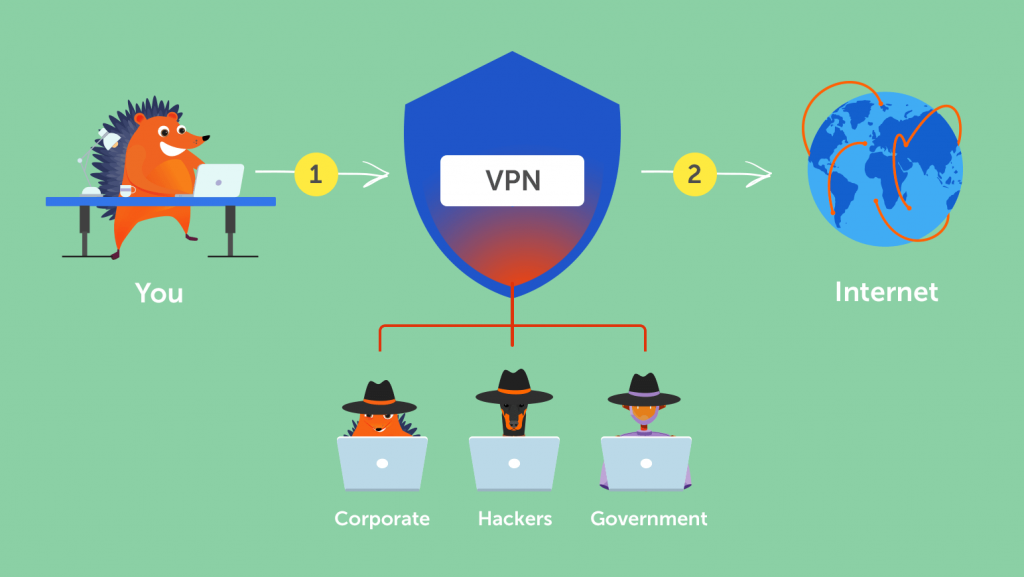

SIMPLE STEPS TO AVOID GETTING HACKED
Undoubtedly, over the past year, we have seen a dramatic increase in the number of cyberattacks, data breaches, identity theft, and major hacking attacks.
We often think that only big companies are hacked, but each one of us can be a target and we all have important details that hackers want to catch.
The easiest way to get this important data is to crack our email accounts. There are more than 6.69 billion email accounts worldwide and, unfortunately, 1 in 4 of these accounts will be hacked.
The simple reason is that each account contains a large amount of information that can be monetized or used to commit fraud. Our email accounts will contain personal photos, invoices, receipts, addresses, contacts, routes, bank details and often reset passwords for other accounts. All the hijackers need cash and make a profit.
Our accounts can be compromised in several ways, but the most common forms of crime are email theft, sensitive software errors, and password guesses. More than 60% of people use the same password for all of their accounts so if hackers can access one, they can access all of them.
Here are some simple steps to protect yourself online. They can help protect your family and friends and help prevent your email from being broken into:
- Keep All Your Computer And Smartphone Apps Updated Regularly


Do you know Updates often include security improvements, so if an update is available, make it right always?
So always keep your devices up to date.
- Use A Password Manager And Two-Factor Authentication Where Possible


Use a reputable password manager to turn all your online passwords into strong, unique logos for each login. We cannot stress this enough. Hackers today use a strategy called credential stuffing, in which they fill in previously stolen usernames and passwords for as many online services as possible. Why? Because multiple usernames and passwords are the same for all accounts.
Creating a unique password for each of your online services may take some time, but it’s worth avoiding the risk. As you set up your account passwords, set 2-factor authentication (2FA) as an additional security framework for the accounts it provides. This is especially important to prevent unauthorized password reset. Do the same when setting-up IoT devices in your home (then look at IoT devices with the help of 2FA when you buy them).
- If You Sign Up For A New Email Service, Check Out 2FA Support


Not all email providers offer 2FA. So, when you sign up with an email provider, check to see what security layers are available like 2FA either via SMS (less secure) or with an app like Google Authenticator or Authy.
The great advantage of 2FA is that it offers a second layer of security as a text message sent to a smartphone with a one-time password. Only someone with your device can fully complete a new sign-in. Not to mention, it can alert you when someone tries to sign in to your email account.
- Don’t Click On Suspicious Links In Emails, Chat, Or Texts


Fishermen often send links via email or text that look legitimate, but if you click, let them steal your information. Email attachments containing malware are also popular cyber mayhem containers. An easy way to avoid these scams is by not clicking links or attachments. Instead, open another tab, and go to the company’s website in an email or link to see if the information presented matches the official source. As a general rule, try not to open links or download attachments from anonymous senders. Emails from well-known senders containing links or attachments out of context are also bad news.
This will also help you to catch one of the most popular types of email theft sensitive information – incorrect password reset (for example, “Your account is at risk! Click here to reset your login and password.”) Remember email leaks for -Democratic Republic Convention 2016? Started as an error reset.
- Consider Not To Adding A Credit Card To Your Account


As a last resort, if your email is hacked, file a claim on your account. It is easy to do and gives you more control over who has access to your accounts. When shopping (like a car), if someone wants to access your credit report, you can easily open an account, and then return the snow later.
- Keep Your Computer And Smartphone OS Up To Date


Whenever a security update is issued for your application, update it immediately. Consider this basic method of data security.
- Get A Powerful Antivirus


A good antivirus raises the bar to protect your information, with real-time protection from cybercrime and threats such as malware, malware, and more. Antivirus should be installed on your PC, Mac, Android phone, mobile device, and other devices.
- Use A VPN On Your Computer And Your Mobile Devices


You can be identified by using a VPN to encrypt your internet connection. There is no reason to say that when it comes to protecting your personal information. While you are at it, a VPN will make your browsing experience even better, with fewer ads, less tracking, and, of course, more peace of mind knowing you’re safe.
- Do Not Use Public Wi-Fi Or Public Computers, If You Can Help


If you are traveling or not at home, try using the Internet only with your computer or mobile phone, in which case your VPN is turned on. Public computers in hotels, for example, are accessible to other people who may install keyloggers or other malware on them, which may come back to haunt you. Wait to make your online banking or access other accounts that are most relevant to your secure home network, where possible.
Assume that email is not secure, even if you take steps to protect it. What do we mean by this? Simply put, you should avoid sending sensitive information such as payment or credit card data, Social Security numbers, and other personal identification information by email if possible.
Sure, hackers can find ways to dig this information when they get inside your inbox, but don’t make it easy for them. Security like 2FA and good old-fashioned monitoring should hopefully be enough to mark suspicious activities so that you can take immediate remedial action.
Keep it to yourself by following the simple tips above. Taking these few extra steps may not keep spam in your inbox, but it will help put hacking efforts into a useless folder.
Remember, Goodlife puts you at the forefront of the game. www.palmacedar.com

